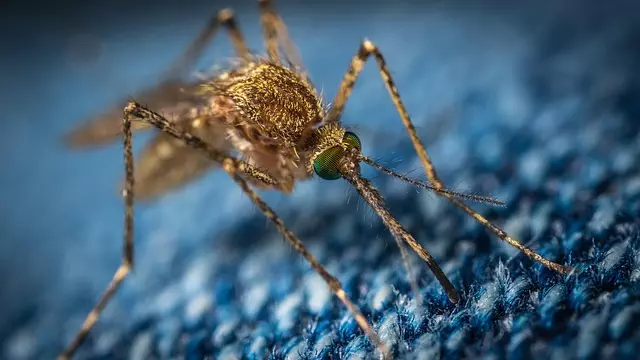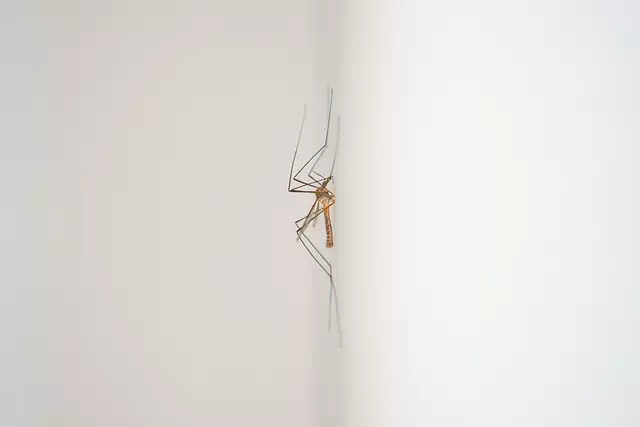Implementing effective Mosquito Control requires understanding diverse species' behaviors, life cycles, and environmental triggers. Targeted interventions like breeding site removal, larvicides, and adulticides disrupt population growth. Factors influencing mosquito abundance include water availability, temperature, humidity, and rainfall patterns. Traditional chemical pesticides face resistance and ecological harm, while Integrated Pest Management (IPM) offers a sustainable approach with biological, cultural, mechanical, and chemical methods. Biological controls, such as natural predators and parasitoids, minimize environmental impact and preserve biodiversity. Community involvement through education and clean-up initiatives is crucial. Sustainable strategies like IPM and biological controls provide long-term solutions, reducing costs over time while protecting the environment. Advancements in gene drives and remote sensing/GIS integration promise revolutionary disease prevention methods.
Mosquitoes are a persistent global health concern, demanding effective long-term control strategies. This comprehensive guide explores diverse approaches to mitigate mosquito populations, delving into their life cycle and environmental drivers of abundance. From traditional pesticides to innovative technologies, we dissect integrated pest management (IPM), biological controls, habitat modification, community engagement, and cost-effective solutions. Understanding these multifaceted strategies is key to achieving sustainable mosquito control in both urban and rural settings.
Understanding Mosquito Populations and Their Life Cycle

Understanding mosquito populations and their life cycle is a crucial step in implementing effective long-term mosquito control strategies. Mosquitoes are diverse, with over 3,500 species worldwide, each with unique behaviors and breeding patterns. Different mosquito types have distinct preferences for habitats, from stagnant water in buckets to complex urban drainage systems. Knowing these variations allows tailored control methods.
The life cycle of a mosquito comprises four stages: egg, larva, pupa, and adult. Female mosquitoes lay eggs in suitable water bodies, which then hatch into larvae that feed on organic matter. After several molts, larvae transform into pupae before emerging as adults. This lifecycle knowledge is vital for targeting specific stages with control measures like removing breeding sites, applying larvicides, or using adulticides to disrupt the population’s growth and distribution.
Environmental Factors Influencing Mosquito Abundance

Mosquito abundance is significantly influenced by various environmental factors that create suitable habitats for their breeding and survival. One of the most critical aspects is water availability, as mosquitoes lay their eggs in stagnant or slow-moving water bodies like ponds, marshes, and buckets or containers that hold water. These sites provide the ideal conditions for their larvae to develop into adults. Temperature also plays a crucial role; mosquitoes thrive in warm climates, with optimal breeding occurring between 27°C and 32°C (80°F to 90°F). This preference makes them more prevalent in tropical and subtropical regions during specific seasons.
Additionally, humidity levels impact mosquito activity. High humidity encourages their survival, especially during dry periods when they may become less active but still capable of breeding if water sources remain available. Rainfall patterns can also disrupt or create suitable breeding grounds, depending on the intensity and frequency. Understanding these environmental factors is essential for implementing effective mosquito control strategies, as it allows for targeted interventions to reduce their population and minimize the risk of associated diseases.
Traditional Mosquito Control Methods: Pesticides and Sprays

Traditional mosquito control methods often involve the use of pesticides and sprays, which have been a go-to strategy for decades. These chemical compounds are designed to eliminate or repel mosquitoes, primarily targeting adult insects during peak activity periods. Common practices include aerial spraying, where aircraft disperse insecticides over large areas, and ground applications, such as handheld sprayers used in more localized settings. While effective in the short term, this method has limitations and potential drawbacks. Pesticides can have adverse environmental impacts, affecting non-target organisms like beneficial insects and aquatic life. Additionally, mosquitoes can develop resistance to these chemicals over time, reducing their effectiveness for long-term mosquito control.
Integrated Pest Management (IPM) Approaches for Mosquito Control

Integrated Pest Management (IPM) is a comprehensive approach to mosquito control that combines various strategies to effectively manage and reduce mosquito populations. This method prioritizes the use of multiple tactics, including biological, cultural, mechanical, and chemical methods, to minimize the reliance on pesticides. By integrating these diverse techniques, IPM offers a more sustainable and environmentally friendly solution for mosquito management.
Biological control involves introducing natural predators or parasites that target mosquitoes, such as bats, birds, and certain insect species. Cultural practices, like proper water management and habitat modification, can reduce breeding sites by eliminating stagnant water bodies where mosquitoes lay their eggs. Mechanical methods include physical removal of larvae through regular cleaning and maintenance of water containers, while chemical treatments are applied strategically and in targeted areas to minimize environmental impact. This holistic approach ensures more efficient mosquito control, as it disrupts the pest’s life cycle at multiple stages, providing long-term protection without causing significant ecological harm.
Biological Controls: Introducing Natural Predators and Parasitoids

Biological controls, such as introducing natural predators and parasitoids, offer an eco-friendly approach to mosquito control. These methods harness the power of other organisms to suppress mosquito populations. Natural predators like birds, bats, and certain fish feed on mosquitoes, helping to reduce their numbers. Parasitoids, meanwhile, are insects that lay their eggs on or within mosquitoes, eventually killing them. This strategy not only reduces mosquito populations but also minimizes environmental impact compared to chemical pesticides.
By utilizing these biological controls, communities can effectively manage mosquito populations while preserving biodiversity and maintaining a safer, healthier environment for residents. This holistic approach to mosquito control is increasingly recognized as a sustainable solution, providing long-term benefits without the potential harmful effects of synthetic chemicals.
Habitat Modification and Water Management Strategies

Mosquito control goes beyond just eliminating the insects; it involves strategic habitat modification and water management. Removing standing water, which is where mosquitoes breed, is a fundamental first step in mosquito control strategies. This includes emptying containers, cleaning birdbaths, and ensuring proper drainage to deprive mosquitoes of their breeding grounds.
Effective water management practices, such as implementing rain gardens, using moisture-absorbing materials, and adopting efficient irrigation systems, can significantly reduce mosquito populations. These methods disrupt the natural cycle of mosquito breeding by minimizing stagnant water bodies, thereby reducing the overall mosquito control challenge in both urban and rural settings.
Community Involvement and Education Programs

Effective long-term mosquito control strategies benefit greatly from community involvement and education programs. By empowering residents to understand and actively participate in mosquito management, communities can create a more sustainable and holistic approach to pest mitigation. These initiatives should include educational campaigns that highlight the life cycles of mosquitoes, the importance of breeding site elimination, and the use of personal protective measures during peak bite times.
Incorporating community events, such as neighborhood clean-up days focused on removing standing water—a primary breeding ground for mosquitoes—fosters a collective sense of responsibility. Furthermore, these programs should offer practical tips on how to secure homes and outdoor spaces to reduce mosquito entry points. Such collaborative efforts not only enhance the effectiveness of mosquito control but also build resilience within communities, ensuring long-term success in managing this persistent pest.
Long-Term Sustainability and Cost-Effective Solutions

Implementing effective mosquito control strategies requires a long-term approach that balances sustainability and cost-effectiveness. Traditional methods often rely on chemical pesticides, which can have environmental and health impacts, making them less desirable for sustained use. Sustainable solutions focus on integrated pest management (IPM) practices, employing biological controls like introducing natural predators or using plant-based repellents. These eco-friendly alternatives not only minimize ecological harm but also provide long-lasting results by addressing the mosquito lifecycle directly.
Cost efficiency is another key consideration for widespread adoption. While initial setup costs for sustainable systems might be higher, they offer significant savings over time. Community-wide programs that integrate sustainable practices, such as proper waste management, water resource monitoring, and landscape modifications, can lead to substantial reductions in mosquito populations and associated expenses. By investing in these long-term solutions, communities can achieve effective mosquito control while preserving the health of their environment.
Emerging Technologies in Mosquito Control Research

Mosquito control research is continually evolving, with emerging technologies offering promising solutions for long-term mosquito management. One notable advancement is the development of genetic tools that allow scientists to manipulate mosquito populations. For instance, gene drives have been explored as a method to suppress or eliminate specific mosquito species by altering their DNA and rendering them unable to reproduce successfully. This innovative approach has shown potential in containing the spread of diseases transmitted by mosquitoes, such as malaria and dengue fever.
Additionally, the integration of remote sensing and geographic information systems (GIS) is enhancing our understanding of mosquito habitats and behavior. By analyzing satellite data and mapping software, researchers can identify breeding grounds, predict mosquito movements, and plan targeted interventions. This technology-driven approach to mosquito control enables more efficient resource allocation and proactive disease prevention strategies in both urban and rural settings.
